In the ever-evolving landscape of digital marketing, mastering Search Engine Optimization (SEO) is essential for businesses looking to increase their online visibility, attract targeted traffic, and drive conversions. At the heart of every successful SEO strategy lies the strategic use of keywords. Keywords serve as the foundation upon which effective SEO campaigns are built, connecting users’ search queries with relevant content.
In this comprehensive guide, we’ll explore the different types of keywords, delve into when and how to use them, and understand the best practices for keyword optimisation.
1. Short-Tail Keywords
Short-tail keywords are the bread and butter of SEO, representing the most fundamental form of search query. These keywords are short, snappy, and to the point, typically consisting of one or two words. While they boast high search volume and can attract a broad audience, they also come with intense competition.
Businesses often use short-tail keywords to cast a wide net and increase visibility in search results. However, due to their generic nature, short-tail keywords may not always capture the specific intent of users, leading to lower conversion rates compared to more targeted keywords.
For example, an online shoe retailer may target the short-tail keyword “shoes” to attract users interested in footwear. While this keyword may generate significant search volume, it also faces intense competition from various retailers and brands vying for visibility in search results.

2. Long-Tail Keywords
Long-tail keywords, on the other hand, offer a more nuanced approach to SEO. These keywords are longer and more specific, often comprising three or more words. While they may have a lower search volume compared to short-tail keywords, long-tail keywords boast higher relevancy and conversion rates.
Users who search for long-tail keywords tend to have a clearer idea of what they’re looking for, making them more likely to engage with relevant content. Businesses can leverage long-tail keywords to target niche audiences, address specific pain points, and provide tailored solutions to user queries.
For instance, the same shoe retailer may target the long-tail keyword “best women’s running shoes for beginners.” This keyword not only narrows down the audience but also addresses a specific need, attracting women who are beginner runners. They are more likely to convert into customers due to the relevance of the product to their search query.
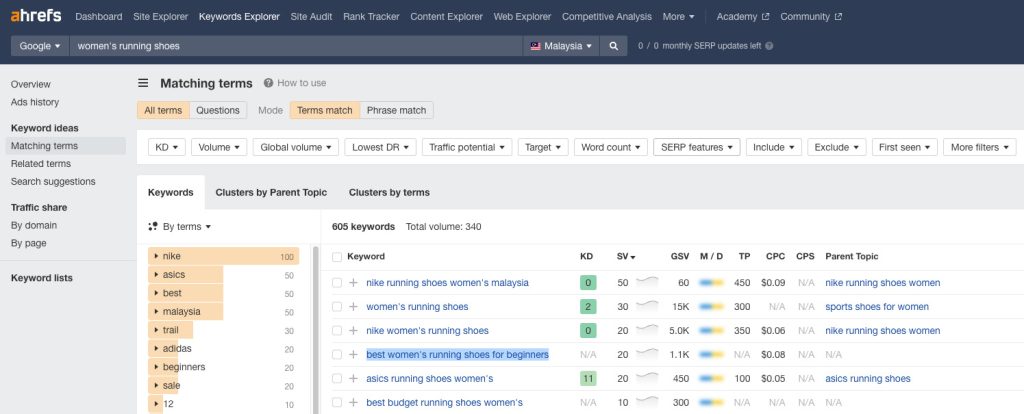
3. Product Keywords
Product keywords are the lifeblood of e-commerce websites, driving traffic and sales for specific products or services. These keywords directly describe the products being sold, making them essential for product pages, category pages, and promotional campaigns. For example, the retailer may optimise product pages with keywords like “Nike Air Force 1” to attract users searching for that specific shoe model.
Businesses can optimise product keywords by incorporating detailed product descriptions, specifications, and customer reviews. By targeting product keywords effectively, businesses can attract users who are actively searching for the products they offer, leading to higher conversion rates and increased revenue.
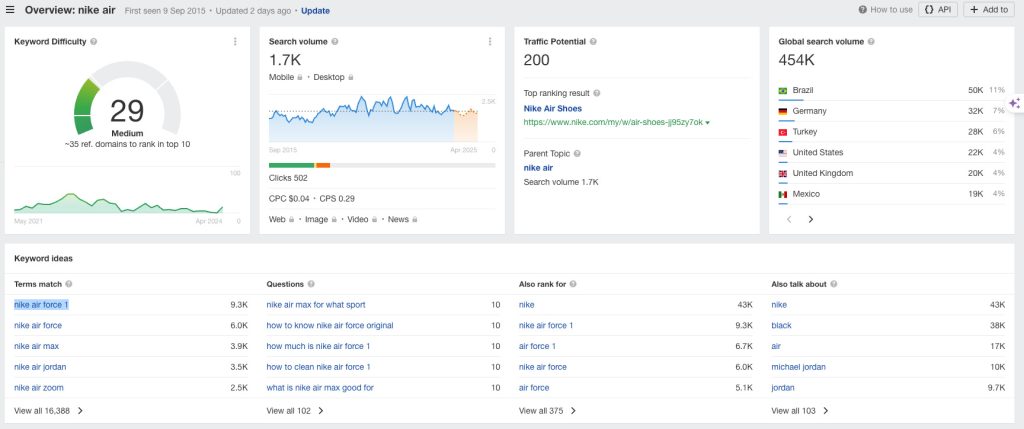
4. Transactional Keywords
Transactional keywords signal the user’s intent to take a specific action, such as making a purchase, signing up for a service, or downloading a resource. These keywords often include action-oriented terms like “buy,” “order,” “hire,” or “download,” indicating users who are ready to engage with a business. For instance, a user searching for “buy shoes online” is actively seeking to make a purchase.
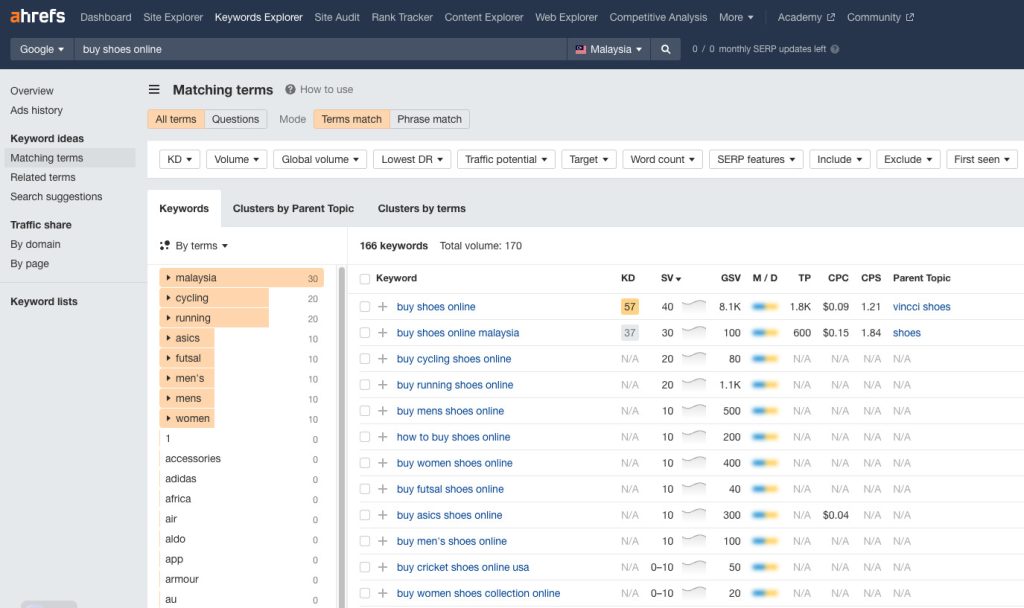
Businesses can capitalise on transactional keywords by optimising landing pages, calls-to-action, and checkout processes to streamline the user journey and facilitate conversions. By targeting transactional keywords effectively, businesses can drive sales and generate revenue from their online presence.
5. Informational Keywords
Informational keywords cater to users seeking knowledge, answers, or solutions to their queries. These keywords typically start with question words like “how,” “what,” “where,” “when,” or “why,” indicating users who are in research mode. Businesses can leverage informational keywords to provide valuable content that educates, informs, and engages their target audience.
By creating high-quality blog posts, articles, tutorials, and guides optimised for informational keywords, businesses can establish themselves as authoritative sources in their respective industries, build trust with their audience, and drive brand awareness.
For example, a blog post titled “How to Choose the Right Running Shoes” targets users in the research phase of their buyer’s journey. By providing valuable information and addressing common pain points in choosing running shoes, businesses can attract users, establish authority in their industry, and nurture relationships with potential customers.
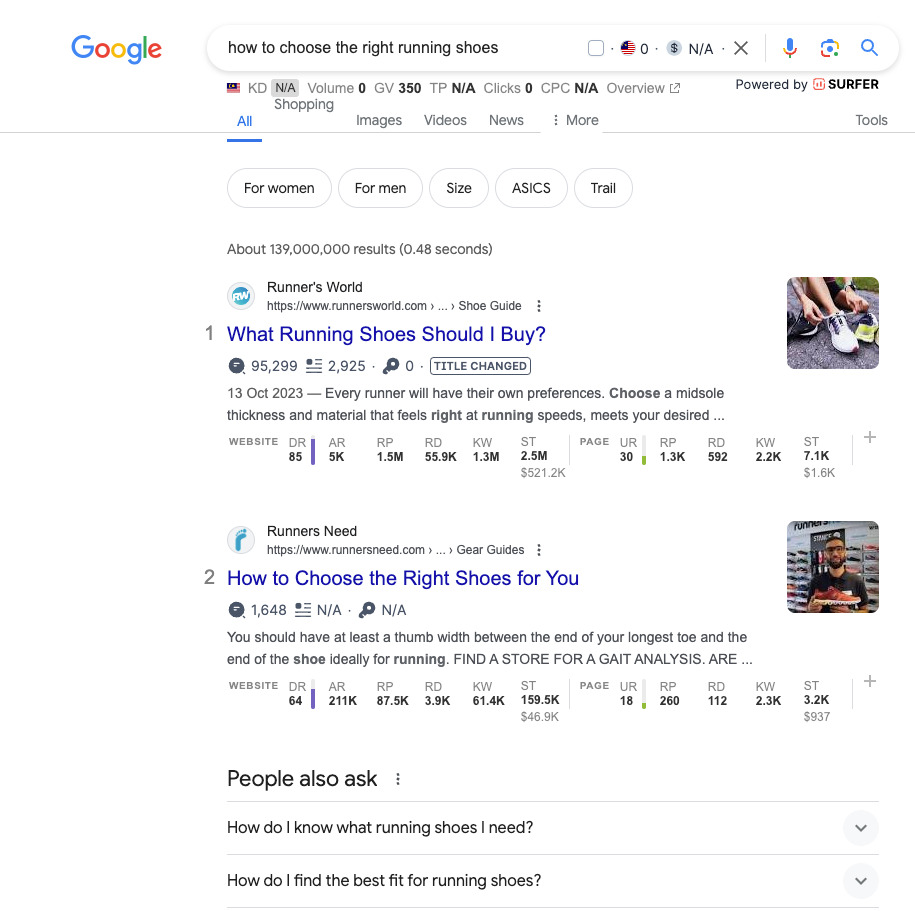
6. Navigational Keywords
Navigational keywords are used by users who are looking for specific websites or webpages. These keywords often include brand names, product names, or website names, indicating users who are already familiar with a particular brand or seeking specific online destinations. For example, a user searching for “Nike official website” is looking to access the brand’s online store or browse its products.
Businesses can optimise for navigational keywords by ensuring their website is easily accessible, navigable, and searchable. By providing clear navigation paths, intuitive site structure, and prominent internal linking, businesses can ensure users can easily find the content they’re looking for, leading to an improved user experience and increased engagement.
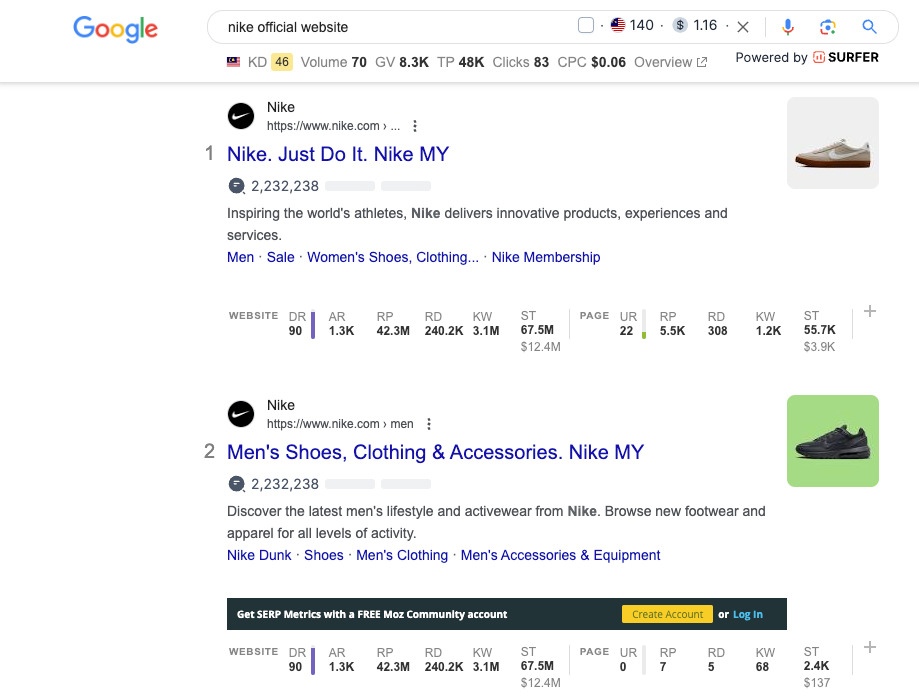
7. Local or Geo-Targeted Keywords
Location-based or geo-targeted keywords play a vital role in local SEO, helping businesses attract customers within a specific geographic area. These local keywords include location-specific terms like city names, neighbourhood names, or other regional qualifiers, indicating users who are searching for businesses or services nearby. For example, a local sneaker store may optimise its website with keywords like “” to attract local customers.
Businesses can optimise for local keywords by incorporating location-specific landing pages, local business listings, and geo-targeted content. By targeting local keywords effectively, businesses can increase their visibility in local search results, attract foot traffic to physical locations, and establish strong connections with their local community.
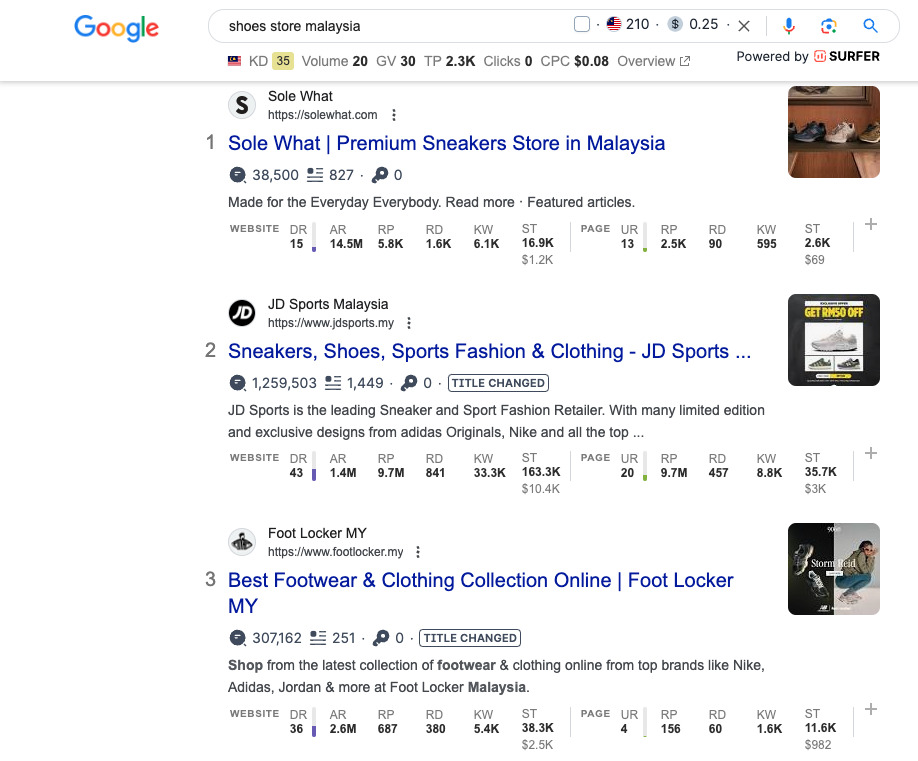
8. Seasonal Keywords
Seasonal keywords are relevant only during specific times of the year, such as holidays, seasons, or events. These keywords capitalise on temporary trends, consumer behaviours, and cultural moments associated with particular times of the year. For example, a retailer may create a campaign around “Valentine’s Day gifts” to attract shoppers during the holiday season.
Businesses can optimise for seasonal keywords by creating themed content, promotions, and marketing campaigns tailored to seasonal events. By tapping into the excitement and anticipation surrounding holidays and events, businesses can drive engagement, increase brand awareness, and boost sales during peak seasons.
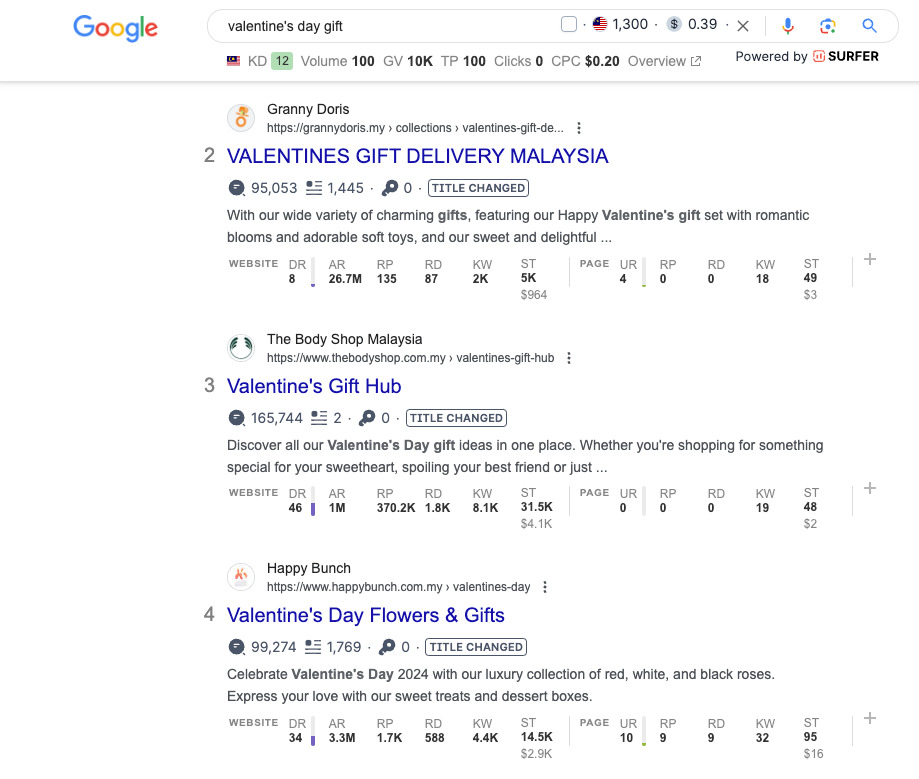
9. LSI (Latent Semantic Indexing) Keywords
LSI (Latent Semantic Indexing) keywords refer to terms that are semantically related to the main keyword, helping search engines understand the context and relevance of the content. These keywords enhance the depth and comprehensiveness of content, making it more valuable to users and search engines alike.
For example, the primary keyword “healthy eating” covers a broad topic related to nutrition and dietary habits. Semantic keywords such as “healthy diet plan” and “7-day healthy eating plan” provide additional context and depth to the content, offering users a comprehensive understanding of healthy eating principles and practices.
Businesses can optimise for LSI and semantic keywords by incorporating related terms, synonyms, and variations naturally within their content. By providing contextually rich and comprehensive content, businesses can improve their chances of ranking higher in search results and attracting organic traffic from a diverse range of search queries.
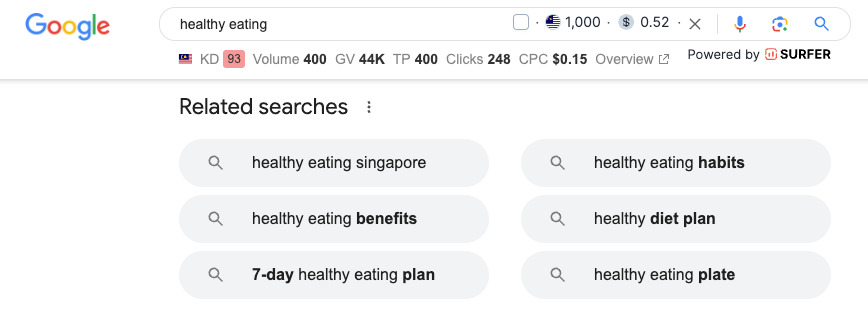
10. Branded Keywords
Branded keywords contain specific brand names and are used to target users searching for a particular brand or its products/services. These keywords are crucial for brand visibility, reputation management, and protecting brand identity in search results. Branded keywords often include the brand name or variations of it, indicating users who are already familiar with the brand or actively seeking information about it. For example, a user searching for “Coca-Cola” is looking for information about the brand or its products.
Businesses can optimise for branded keywords by ensuring consistent brand messaging, monitoring brand mentions, and actively engaging with their audience across various online channels. By dominating search results for branded keywords, businesses can establish themselves as industry leaders, build brand loyalty, and drive conversions.
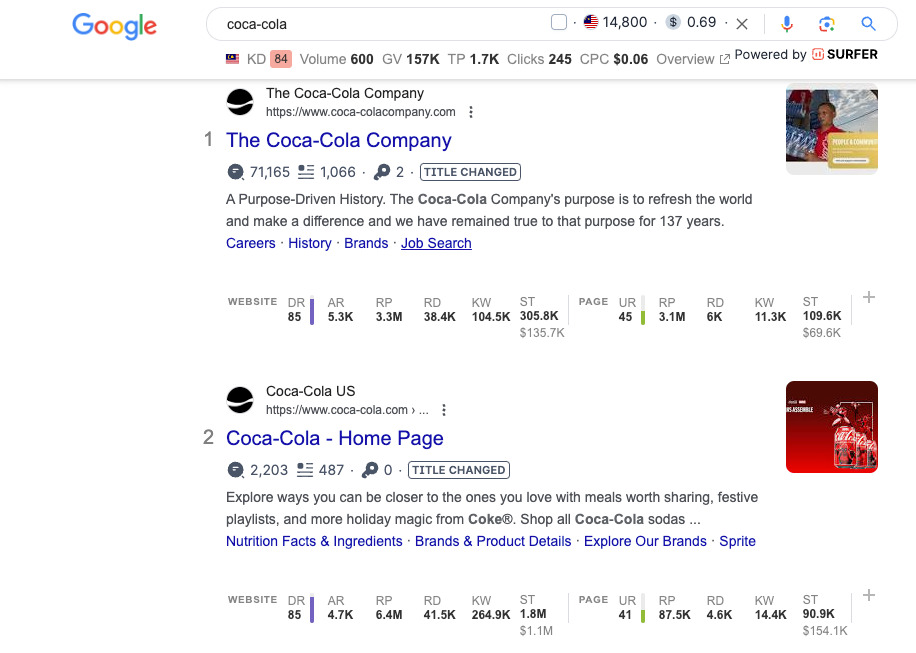
11. Non-Branded Keywords
Non-branded keywords do not contain specific brand names and are used to target broader audiences interested in generic terms related to a product, service, or industry. These keywords focus on product/service attributes, industry terms, or generic search queries, indicating users who are in the early stages of the buyer’s journey or exploring their options. For example, a user searching for “carbonated drinks” is exploring their options without specifying a particular brand, as opposed to branded keywords.
Businesses can optimise for non-branded keywords by creating informative, educational, and valuable content that addresses user needs and interests. By providing helpful resources, solving problems, and offering unbiased information, businesses can attract new customers, increase brand exposure, and drive consideration for their products or services.
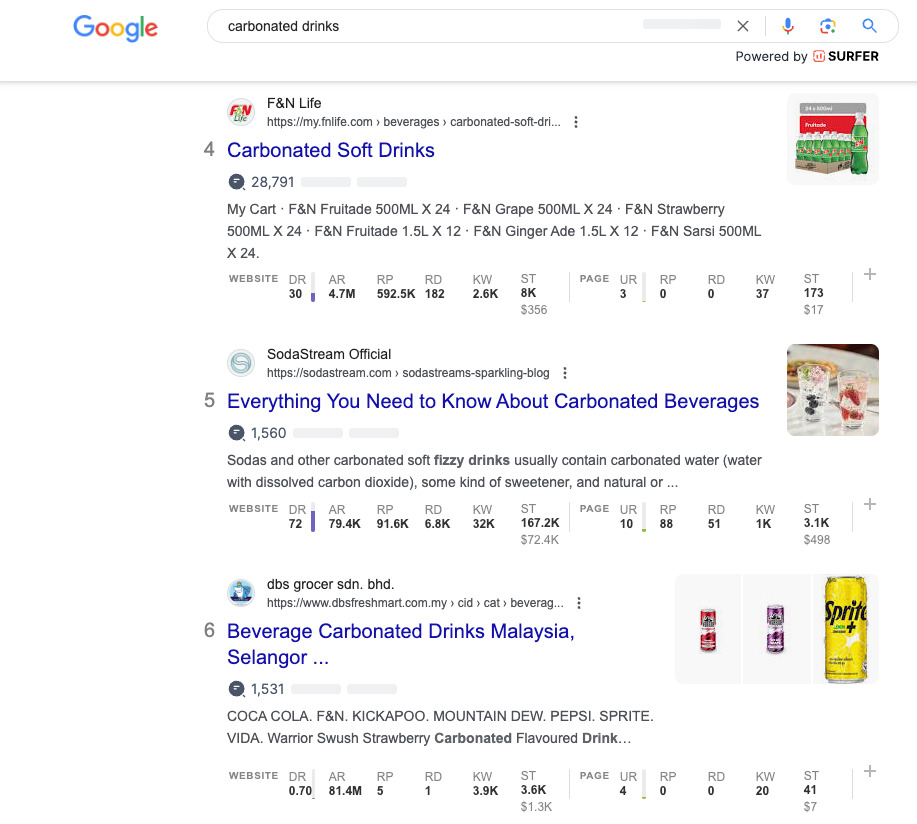
12. Primary Keywords
Primary keywords are the main keywords directly related to the main topic of the content, defining its primary theme or subject matter. These keywords set the tone and direction for the content, guiding its structure, focus, and relevance. Primary keywords are typically broad in scope, encompassing the core concepts or ideas being conveyed. For example, an article about digital marketing would centre around strategies, techniques, and best practices within the field of digital marketing.
Businesses can optimise for primary keywords by conducting thorough keyword research, analysing search intent, and creating high-quality content that aligns with user expectations. By incorporating primary keywords strategically within their content, businesses can improve their chances of ranking higher in search results and attracting organic traffic from relevant search queries.
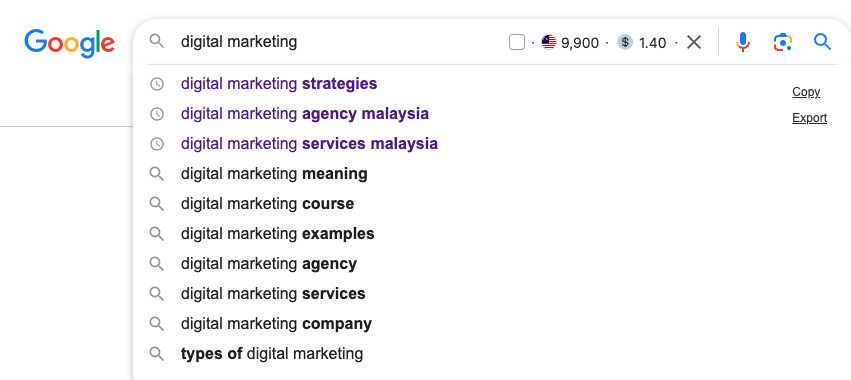
13. Secondary Keywords
Secondary keywords are related keywords that provide additional context or support to the main topic of the content, complementing primary keywords and adding depth and variation. These keywords may include synonyms, variations, or related terms that expand upon the main theme of the content, enhancing its comprehensiveness and relevance. In the same article, secondary keywords like “content marketing techniques” and “SEO best practices” would offer additional insights into specific areas within the broader scope of digital marketing.
Businesses can optimise for secondary keywords by conducting keyword research, analysing search trends, and identifying related terms that users may use to search for similar content. By incorporating secondary keywords naturally within their content, businesses can improve its semantic relevance, increase its visibility in search results, and attract a broader audience interested in related topics or concepts.
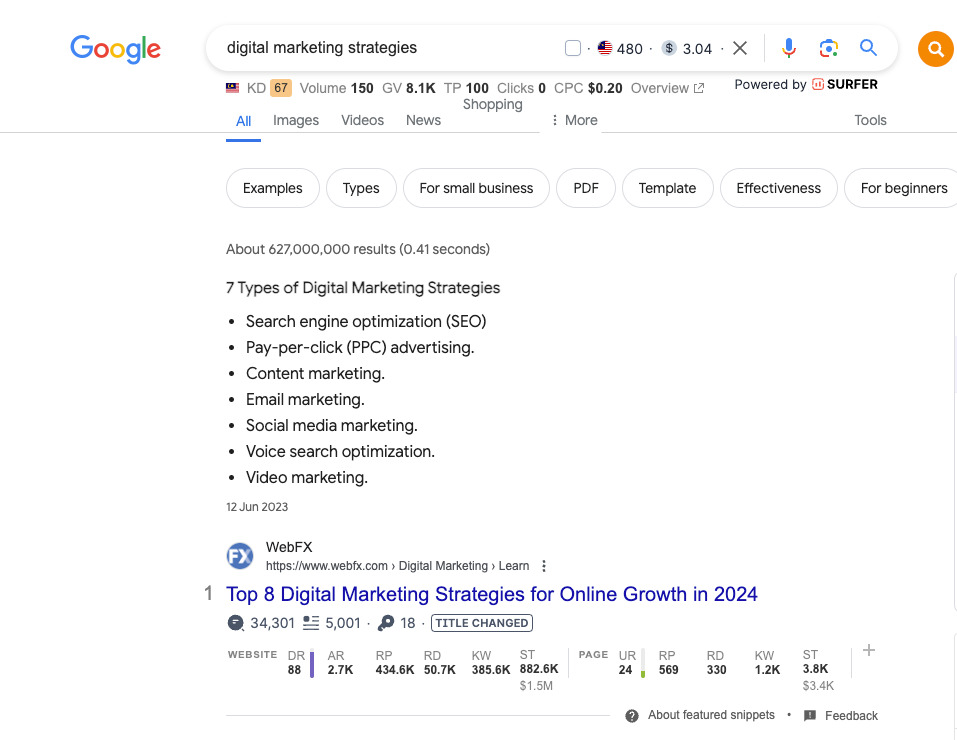
Best Practices in Keywords Research and Optimisation
To leverage these keywords effectively, follow these best practices:
- Conduct Thorough Keyword Research: Use a combination of keyword research tools, analytics data, and industry insights to identify relevant keywords across different stages of the customer journey.
- Understand User Intent: Tailor your keyword strategy to align with the specific needs, interests, and intentions of your target audience. Differentiate between informational, transactional, and navigational queries to deliver content that meets user expectations.
- Optimise On-Page Elements: Incorporate targeted keywords into key on-page elements such as titles, meta descriptions, headings, and body content to signal relevance to search engines and improve visibility.
- Create High-Quality Content: Develop compelling, informative, and engaging content that addresses user queries and provides value. Use a mix of primary and secondary keywords naturally within the content to enhance context and readability.
- Monitor and Adapt: Regularly monitor keyword performance, search trends, and algorithm updates to refine your keyword strategy over time. Stay agile and adapt to changes in search behaviour and industry dynamics.
Conclusion
Keywords are the building blocks of effective SEO, connecting users with the content they seek. By understanding the different types of keywords and employing strategic keyword optimization techniques, businesses can enhance their online presence, improve search engine rankings, and ultimately achieve their marketing objectives. Incorporate a diverse range of keywords into your SEO strategy, and watch as your visibility and organic traffic soar in the competitive digital landscape.






